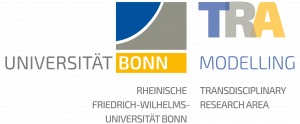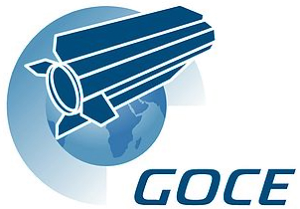Current projects

Development of Continuous Spatio-Temporal Finite Element Based Models for Sea Surface Approximation
Start-up funding by the Transdisciplinary Research Area 1 Mathematics, Modelling and Simulation of Complex Systems (TRA Modelling) of the University of Bonn in the context of Early Career/PostDoc support.
The goal of the project is the design and submission of a DFG proposal (Sachbeihilfe) on the development of a continuous parametric spatio-temporal finite element based approximation model of the sea surface using satellite altimetry sea surface height measurements. The project allows to continue the studies started within a Master thesis towards a DFG funded PhD project.
A parametric function continuously defined in the spatial as well as temporal domain is constructed from a C1-smooth finite element space to represent the sea surface. An advantage of the proposed method is that the surface is represented by an analytic model. Whereas the static component of the function represents the mean sea surface, the temporal component is proposed to model the ocean variability.
(PI: Jan Martin Brockmann, researcher: Moritz Borlinghaus)

NonStopLSC – Nonstationary stochastic processes in least squares Collocation
Through inverse modeling and adjustment techniques, the geodesists try to derive mathematical models from their measurements to get a better understanding of the processes in the system Earth.
Sophisticated deterministic and stochastic models are developed to achieve the best possible reflection of reality and the remaining uncertainty.
While deterministic modeling has been improved by much effort, there are still serious weaknesses in the applied stochastic models and representations.
Especially in the collocation approach a remove-restore technique is often used to, on the one hand side, guarantee stationarity and, on the other side, get better access to the different frequency contents, which is often hidden in the empirical covariance sequence.
Within this project, the representation of stochastic signals with autoregressive processes is proposed which are able to describe the complete frequency spectrum.
It shall be highlighted that this is not only the case for stationary processes, but also for time-variable signals.
But in theory, this process representation is restricted to equispaced infinite measurement series.
Therefore, both representations — the covariance and the process representation — have their pros and cons. A framework for the fusion of the pros is proposed here.
The main focus of this proposal is a further development of stochastic model representations, which can reflect the full signal content and have the capability to switch from the usual assumption of time-stationary to time-variable stochastic models.
We want to build up and extent a methodical framework to connect the filter and the covariance approach represented by autoregressive processes and least squares collocation.
We do this in a strictly formalized way using the ‘Magic Square’ mechanism which opens the possibility to switch between these two approaches.
The proposed extension from the time-discrete processes to stochastic ordinary differential equations opens the way to derive continuous covariance functions from discrete covariance sequences. As a result a family of covariance functions will be established, which will be able to describe the entire signal content as well as the time-variability of stochastic processes.
To study this methodical framework with real applications we will refine the analysis of real measurement series from geodetic data sets (from dedicated geodetic satellite missions GOCE, GRACE, GRACE/GRACE-FO and GRAV-D airborne gravity data) especially with respect to their time-variable stochastic signal characteristics.

PARASURV — PArametric determination of the dynamic ocean topography…
The geodetic estimation of the dynamic ocean topography as the difference between the sea surface height and the geoid remains, despite the simple relation, still a difficult task. Mainly, the spectral inconsistency between the available altimetric sea surface height observations and the geoid information causes problems in the separation process. This is complemented by the accuracy characteristics of the satellite derived geoid information, as it is only sufficiently accurate for a resolution of about 100 km.
Parametric approaches which describe the dynamic ocean topography with a mathematical function are rarely used. Instead, most of the derived models are grid based — function values provided on a predefined grid with a given resolution. Within their generation, typically multi-step approaches are used, deriving the grid in several steps.
Using regular grids results in problems, when besides the classically used geoid and altimetric information, additional observations are included into the dynamic topography estimation. Furthermore, the existing approaches have limitations properly accounting for the accuracy information of the used data sets.
To avoid these limitations, the use of an integrated parametric one-step approach is proposed. Mathematical functions representing the geoid and the dynamic ocean topography are simultaneously estimated. The physical model describing the dynamic ocean topography can not be finitely parameterized. Thus an approximation of the real function space is necessary, which can be done within a finite element approach with predefined smoothness properties. Within this project the use of C1-smooth finite elements for the parameterization of the dynamic ocean topography is proposed and shall be implemented. This property is motivated by the second aspect of the proposal, the use of additional observations. Synthetic Aperture Radar derived radial surface velocities shall be integrated into the adjustment to constrain the estimate and support the separation of sea surface height measurements into geoid and dynamic ocean topography. Within this proposal the properties of stochastic radial surface velocity observations and their use for dynamic topography modeling shall be studied.

Integrated modelling of SAR interferometry and levelling…
… for the monitoring of large-scale deformations on the earth’s surface between 2002 and 2012. In the proposed project the possibilities for the monitoring of subaerial deformations by
combining large-scale and long-term levelling campaigns and (differential) SAR
interferometry (D-InSAR) shall be investigated. The area of interest is the “Lower Rhine
Embayment”, the Lowland, which extends northwards into the Rhenish Massif (German:
Rheinisches Schiefergebirge). There are known subaerial deformations in the southern
part near Cologne, North Rhine-Westphalia (Germany), which are caused by
anthropogenic influences, especially underground mining and accordingly the extraction
of underground resources.
In a first study Halsig (2012) investigated, how D-InSAR could support conventional
methods by the determination of surface deformation. Therefore, he compared ERS D-
InSAR data with levelling measurements in the same time-span between 1993 and 2001.
As there are also levelling data between 2001 and 2009 available, the idea of this project
is to extend the investigation by using ENVISAT data between 2002 and 2012.

ESA GOCE High Level Processing Facility: GOCE Core Solver – Tuning Machine
The satellite mission GOCE is dedicated to the precise modeling of the Earth’s gravity field from satellite gravity gradiometry (SGG) and high-low satellite-to-satellite tracking (hl-SST) observations. Scientific data analysis will be carried out under ESA contract by a consortium of 10 European university and research institutes (EGG-C). In the framework of this contract, the Sub-Processing Facility (SPF) 6000, a co-operation of TU Graz, Austrian Academy of Sciences, University of Bonn, and TU Munich under the lead of TU Graz is responsible for the computation of an Earth’s gravity field model from the GOCE data. The determination of approx. 70,000 parameters from several hundred million observations is a huge numerical task. For the rigorous solution of these large systems, the Core Solver, being based on parallel strategies on a PC cluster, is applied. Additionally, for the purpose of a quality assessment of the GOCE solution in parallel of the mission, the Quick-Look Gravity Field Analysis (QL-GFA) is applied.

Gravity Observation Combination (GOCO)
The main goal of the project is the generation of a combined global gravity field model, by combining GOCE data with complementary data from the gravity field missions CHAMP and GRACE, and also other external data sets (terrestrial, air-borne, altimetry, etc.). Correspondingly, the proposed project primarily contributes to the determination of global and regional models of the Earth’s gravity field with high spatial resolution and accuracy, by further improving the GOCE-only gravity field model both with respect to accuracy and spatial resolution. The key tasks are the processing of GOCE, GRACE and CHAMP normal equations, the adequate treatment of complementary terrestrial gravity field information, and their fusion based on the addition of normal equations. Special concern is put on theoretical and methodological considerations concerning the optimum combination of different gravity field data types and their homogenization, including the problem of reference frames, standards, the optimum weighting of the individual contributions, and regularization issues. The project will be performed by a joint Austrian, Swiss and German research team, being composed of the Graz University of Technology (PI), the University of Bonn, the Technical University Munich and the University of Bern.

MAssive Parallel Approximation of Static and Time-VariablE Reference Surfaces…
MAPSTER: MAssive Parallel Approximation of Static and Time-VariablE Reference Surfaces with C1-smooth Finite Element Model Functions:
The Earth’s gravity field is closely interrelated with global Earth
dynamics. Therefore, its accurate knowledge plays an important role
in understanding and modeling Earth processes in various fields of
geoscientific disciplines. The ocean’s dynamic topography as the
difference between the sea surface and the geoid, a functional of the
gravity field, provides valuable information for improving estimates
of the ocean circulation. The goal of the project is to design,
establish and implement a procedure to estimate a parametric
C1-smooth MDT model from along-track altimetric sea surface height
measurements, satellite-based geoid information and radial surface
velocities captured by SAR satellite platforms. Both, MDT and geoid
are described continuously by deterministic parametric functions.
i.e. global spherical harmonics for the geoid and a C1-smooth finite
element space for the MDT. The tasks can be seen as an inverse data
fitting problem, a highly overdetermined adjustment problem
Former projects
- GCS/FZJ@JSC: Adaptive Optimization of Global Gravity field modeling and the Ocean’s Dynamic Topography
- ESA STSE: COSIMO – Consistent combination of satellite- and in-situ data to model the ocean’s time variable dynamic topography
- HPSC TerrSys: Consistent assimilation of spaceborne radar interferometry (InSAR) data into integrated terrestrial systems
- DFG: GO2000+ – Rigorous computation of high resolution spherical harmonic gravity models on massive parallel computer systems
- DFG:RIFUGIO+ – Rigorous Fusion of Gravity Field into Stationary Ocean Models
- DFG:RIFUGIO – Rigorous Fusion of Gravity Field into Stationary Ocean Models
- DFG: INTERMOD – Consistent integration of global gravity field information into Earth process models
- BMBF/Geotechnologien: REAL GOCE – Realdatenanalyse GOCE Koordination
- BMBF/Geotechnologien: REAL GOCE – WP130 Prozessierung der GOCE Beobachtungen zur Bestimmung globaler Erdschwerefeldmodelle
- BMBF/Geotechnologien: GOCE GRAND II -GOCE-GRavitationsfeld-ANalyse Deutschland
- BMBF/Geotechnologien: GOCE GRAND -GOCE-GRavitationsfeld-ANalyse Deutschland
